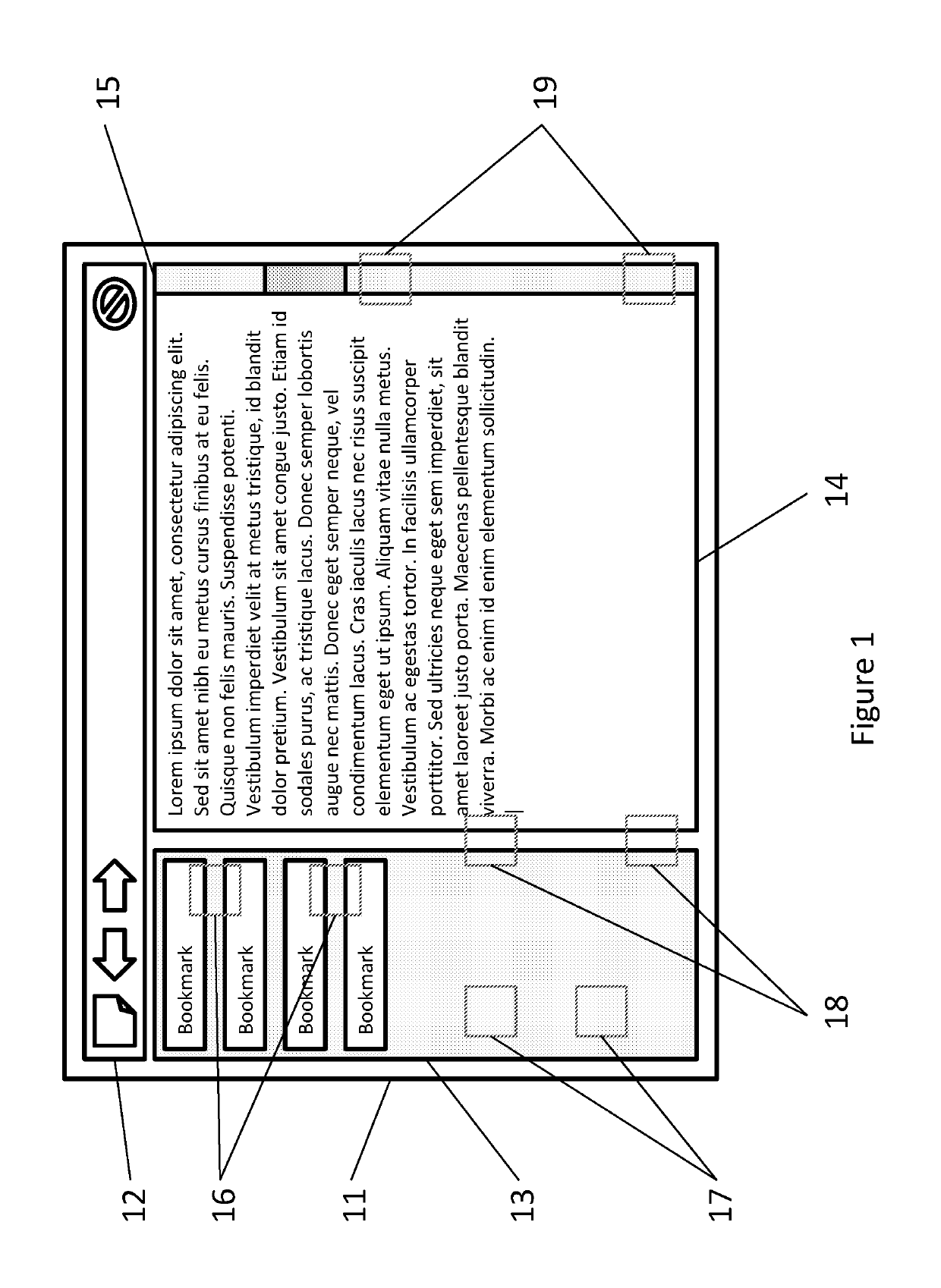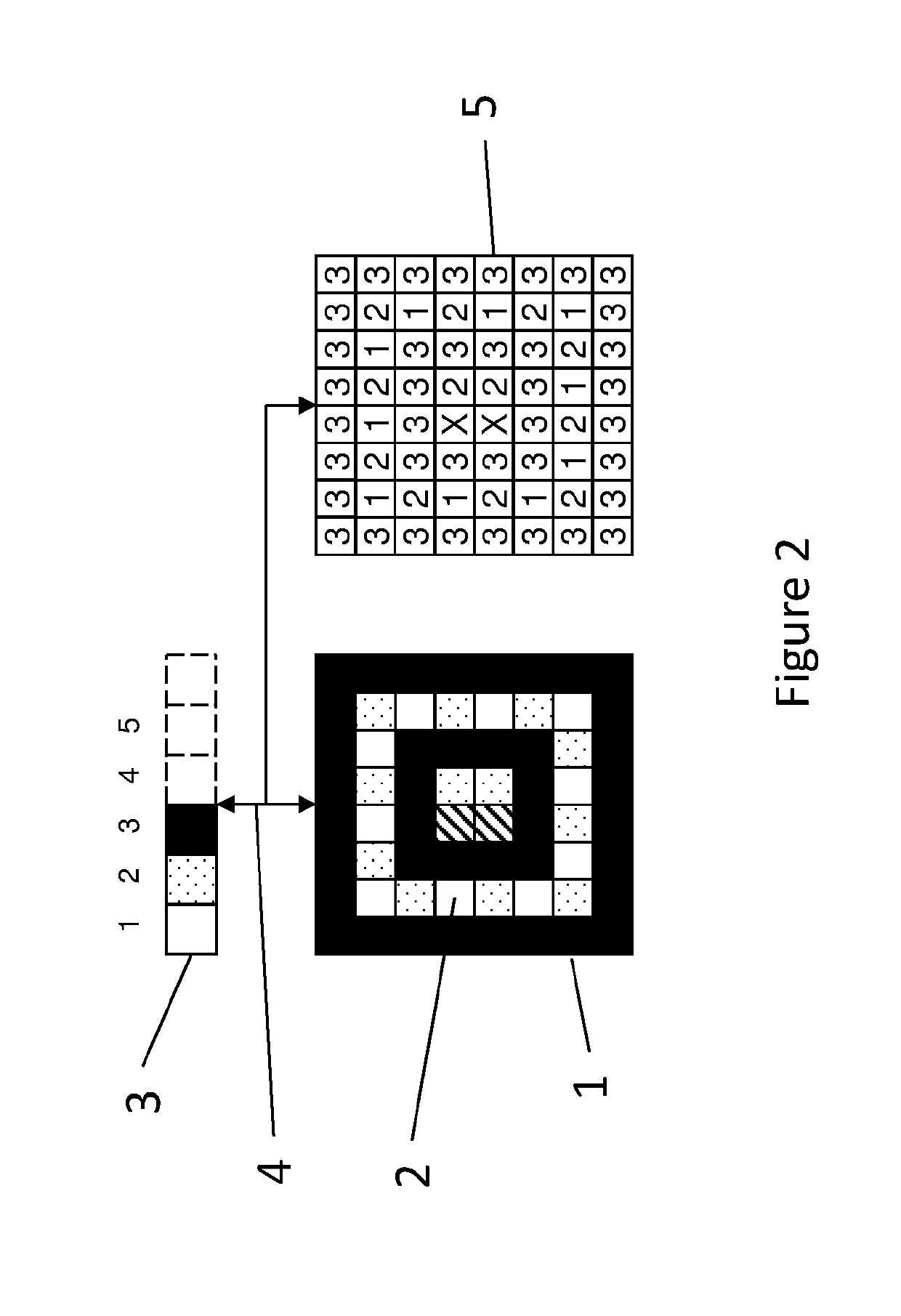Managing display data
- Summary
- Abstract
- Description
- Claims
- Application Information
AI Technical Summary
Benefits of technology
Problems solved by technology
Method used
Image
Examples
Example
DETAILED DESCRIPTION OF THE DRAWINGS
[0136]In the description below, the following terms have the following meanings:[0137]Cache ID: a reference to a tile's position in a cache, for example the third position from the front of an array, or the key of a lookup table.[0138]Tile ID: a reference to a tile's position in a frame, for example a row / column reference.[0139]Frame list: a list of pointers to memory locations such that each pointer is associated with a location in a frame and each memory location contains a tile.[0140]Display control device: a device placed between the host and the display device for processing display data and forming frames which may be either a separate device or incorporated into a display device.
[0141]FIG. 1 shows an example of a desktop image [11] comprising a menu bar [12] with several icons, a navigation pane [13] with a number of buttons that act as bookmarks to parts of a document, an area of text [14], and a scroll bar [15]. There are significant area...
PUM
 Login to View More
Login to View More Abstract
Description
Claims
Application Information
 Login to View More
Login to View More - R&D
- Intellectual Property
- Life Sciences
- Materials
- Tech Scout
- Unparalleled Data Quality
- Higher Quality Content
- 60% Fewer Hallucinations
Browse by: Latest US Patents, China's latest patents, Technical Efficacy Thesaurus, Application Domain, Technology Topic, Popular Technical Reports.
© 2025 PatSnap. All rights reserved.Legal|Privacy policy|Modern Slavery Act Transparency Statement|Sitemap|About US| Contact US: help@patsnap.com



